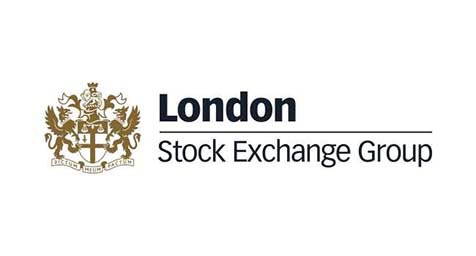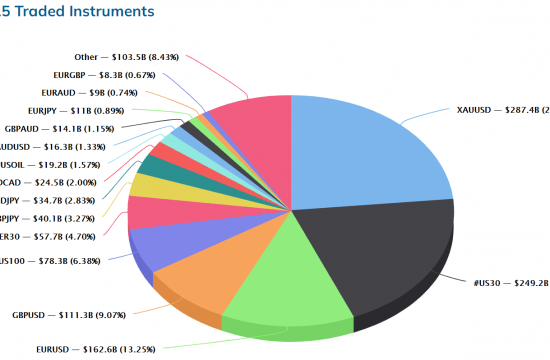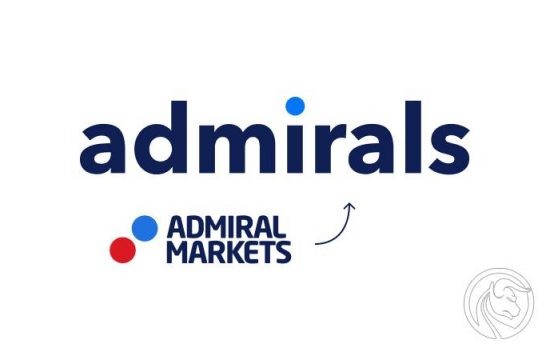 Introduction
Introduction
I would like to recognize that the land we are standing on today is the traditional territory of many nations, including the Mississaugas of the Credit, the Anishinaabe, the Chippewa, the Haudenosaunee and the Wendat peoples.
I would also like to thank the conference organizers for inviting me to speak this morning.
ACAMS is a global leader in training and development and plays a critical role in bringing together professionals from a variety of disciplines to share valuable insight on a complex and ever-evolving AML/ATF environment.
We all approach money laundering and terrorism financing from a different lens, based on the responsibility that we have within the broader regime. But we understand the damaging and corrosive impact that these crimes have on Canadians, on our institutions, on our economy and on our country. We all have a stake in coming together to combat these illicit activities.
Today, I will talk about:
- The results that we are achieving together for Canadians;
- FINTRAC’s commitment to increasing transparency in our program; and
- What we would like to do to address burden.
I will leave plenty of time at the end of my remarks to take your questions.
Collective Results
FINTRAC is responsible for ensuring compliance with the Proceeds of Crime (Money Laundering) and Terrorist Financing Act. Compliance helps to deter criminals and terrorists from operating within Canada’s legitimate economy.
We all benefit from having a stable and secure financial system that is not easily accessed and exploited by money launderers and terrorist financiers.
Compliance also ensures that we receive the information that we need to fulfill our second operational mandate, which is producing actionable financial intelligence relevant to investigating and prosecuting money laundering and terrorist financing activity.
Last year, with the information that we received from Canadian businesses across the country, we provided more than 2,400 disclosures of actionable financial intelligence, up 50 percent in three years.
This intelligence contributed to 262 project-level investigations at the municipal, provincial and federal levels across the country, in addition to a significant number of individual investigations.
The Alberta Law Enforcement Response Teams recognized FINTRAC’s contribution to Project Offshore, a year-long investigation into a Calgary-based drug trafficking network. A number of individuals were charged with more than 125 criminal offences related to proceeds of crime, drugs and firearms. More importantly, 15,000 fentanyl pills were kept out of the hands of vulnerable Canadians across the country. The valuable information that many of you have provided has helped save these lives.
Right here in Toronto, the RCMP’s Combined Forces Special Enforcement Unit recognized the value of FINTRAC’s financial intelligence to Project OTremens, an investigation into the alleged trafficking of fentanyl, carfentanil, heroin, cocaine and weapons.
We have also seen excellent results through several public-private sector partnerships. With Project Protect, which is aimed at combating human trafficking in the sex trade, suspicious transaction reporting has increased by 782 percent since 2016. This has led to a 450 percent increase in disclosures of financial intelligence for Canada’s municipal, provincial and federal police forces. This project has helped uncover money laundering and led directly to dozens of young Canadian women being rescued from some of the most horrible conditions imaginable over the past year.
We have seen similar, successful results with Project Chameleon, a public-private sector partnership targeting money laundering related to romance fraud, and Project Guardian, which is aimed at combating the trafficking of illicit fentanyl, an opioid that is devastating many Canadian communities.
We are looking to build on these existing public-private sector partnerships, which are the envy of many of our international counterparts.
Last year, we provided 401 disclosures of actionable financial intelligence to foreign financial intelligence units around the world as part of the global effort to combat international money laundering and terrorism financing.
We also co-led the FATF’s project on the Financial Flows of Human Trafficking, and played a key role in that organization’s work on professional money laundering, beneficial ownership, Daesh and Al Qaeda financing, and virtual currencies.
All of these results are collective results and they would not be possible without the support of Canadian businesses who are on the front lines of Canada’s financial system. For this, I would like to thank everyone in the room and your teams for your efforts as we work together to combat money laundering and terrorist activity financing.
Increasing Transparency
As we focus on helping to protect Canadians and Canada’s financial system, we are also looking at increasing transparency within our compliance program.
To ensure a strong and effective AML/ATF regime for Canadians, we are committed to helping businesses comply with their obligations under the Act. Every year, we undertake dozens of presentations, provide hundreds of policy interpretations and answer thousands of questions from businesses across the country.
We also provide comprehensive guidance to assist businesses in navigating the Act and the Regulations, as well as valuable strategic financial intelligence to support them with their risk assessments and in fulfilling their reporting obligations.
To further assist the compliance efforts of businesses, we will be publishing our Compliance Framework later this fall. You should have received a paper copy of this new framework on your seats. It captures the guiding principles that shape our compliance program, and provides a comprehensive description of the services and tools that are available to assist businesses in complying with their obligations.
Later this fall, we will also be publishing our first-ever FINTRAC Assessment Manual, which is based on our own work and considerable consultation with businesses and their associations. Our manual provides a detailed, transparent and plain language account of our overall assessment process, the phases of an examination and the methods we use to assess compliance with the Act. It is meant to provide businesses with a good understanding of how FINTRAC conducts its compliance examinations, including what they can expect from us before, during and after an examination.
When we publish our new assessment manual, we will also be launching our revised Administrative Monetary Penalties policy. This policy will outline – clearly and transparently – our new method of calculating penalties for non-compliance with the Act and Regulations.
Canada’s AML/ATF Regime is anchored in facilitating compliance and changing compliance behaviour. Our focus is on supporting businesses – penalties are not meant as an automatic response to non-compliance. So we will continue to work proactively with businesses.
Having said that, we are prepared to take firm action when it is required, including imposing penalties, to ensure a change in compliance behaviour. We cannot lose sight of the fact that the regime is about protecting Canadians and Canada’s financial system.
With our revised Administrative Monetary Penalties policy, we will consider the unique factors in each case to determine the penalty amount, based on the harm caused by the violations. We will also outline for businesses the factors that have led to our penalty calculation. When we do impose penalties going forward, businesses will understand very clearly why they have received one and how the penalty amount was determined.
Our new FINTRAC Assessment Manual and revised Administrative Monetary Penalties policy are key elements of our broader assessment approach to ensuring compliance. With this approach, we are focused less on technical compliance and more on the overall effectiveness of a business’ compliance program, as well as on the impact of non-compliance on the objectives of the Act and on our ability to carry out our mandate.
As you all know, the Proceeds of Crime (Money Laundering) and Terrorist Financing Act is undergoing a mandatory five-year parliamentary review in addition to the ongoing work related to the proposed changes to the regulations.
Under Finance Canada’s leadership, we were pleased to contribute to the consultations with businesses over the summer on the proposed regulations that will modify existing aspects of the regime and cover new areas such as foreign money services businesses, prepaid cards and virtual currencies. We answered technical questions and, as a first, provided preliminary guidance and mock reporting forms based on the proposed regulations to help businesses better understand what is being proposed and equip them to provide informed feedback.
This was a positive exercise for Canada’s AML/ATF community and a novel approach to the proposed regulatory changes. It is one that we will look to copy when any changes are considered in the future.
I would like to thank the businesses that participated in the consultations, as well as those that provided their input throughout the parliamentary review process.
Addressing Burden
As part of our commitment to increase transparency and engagement with Canadian businesses and their associations, we want to open a dialogue on reducing burden.
Businesses have now been part of Canada’s AML/ATF regime for nearly 20 years. They understand what’s at stake and I truly believe that they want to do their part.
As we look to strengthen our regime, I want to hear their ideas and innovative solutions as it relates to reducing burden. If, for example, there are better or more efficient ways to report to FINTRAC, I want to hear it. I also want to explore with businesses different and potentially more efficient and effective ways of achieving our mandate.
We are open to this dialogue and, in fact, are already taking action to make it a little easier for them to fulfill their obligations.
For example, we have worked extensively with businesses to revise our suspicious transaction reporting guidance to make it clearer and more concise. While the obligations themselves are not changing, this new guidance will help businesses better understand what suspicious transactions are, the value they provide, and when they must be submitted to FINTRAC. More importantly, this new guidance will be tailored specifically to each reporting sector, including providing money laundering and terrorist financing indicators relevant to each sector.
The simple fact is, we must be open to new ideas and solutions given the incredible change that is taking place in the global financial system, spurred on by quickly evolving technology. We are committed to understanding, addressing and leveraging innovation to ensure that we are able to stay relevant. While it’s true that new technologies can facilitate the illicit activities of criminals and terrorists, it’s equally true that they can create new ways of doing business that are more efficient and effective, as well as reduce burden and costs for businesses.
In order to harness the opportunity offered by technology, we will look to invest in our information technology systems and infrastructure. We will also look to increase our knowledge of new and emerging technologies that are used by legitimate and illegitimate actors.
Finally, in an ever-changing financial system, we will look to be more nimble in how we approach legislative and regulatory changes to the Proceeds of Crime (Money Laundering) and Terrorist Financing Act.
Innovation demands innovative approaches.
Conclusion
This is, in many ways, a defining moment for Canada’s AML/ATF regime, with the parliamentary review, the introduction of new Regulations and the tremendous technological change that is taking place, including in the financial sector.
To help navigate our regime through this time of significant change, we are committed to strengthening our support for Canadian businesses through:
- Even greater transparency in FINTRAC’s compliance program;
- Increased engagement; and
- A sincere desire to open a dialogue on reducing burden.
Going forward, we are also committed to enhancing the financial intelligence that we disclose to Canada’s police and national security agencies, and harnessing – to an even greater extent – the benefits of our strategic intelligence and project-based public-private sector partnerships.
I am confident that, together, we will succeed in building an even stronger, more effective regime for Canadians.
I say this looking at the remarkable expertise, knowledge and commitment in this room.
I also say this looking at the impressive results – collective results – that we are producing in the fight against money laundering and terrorism financing.
With that, I am happy to answer your questions.













